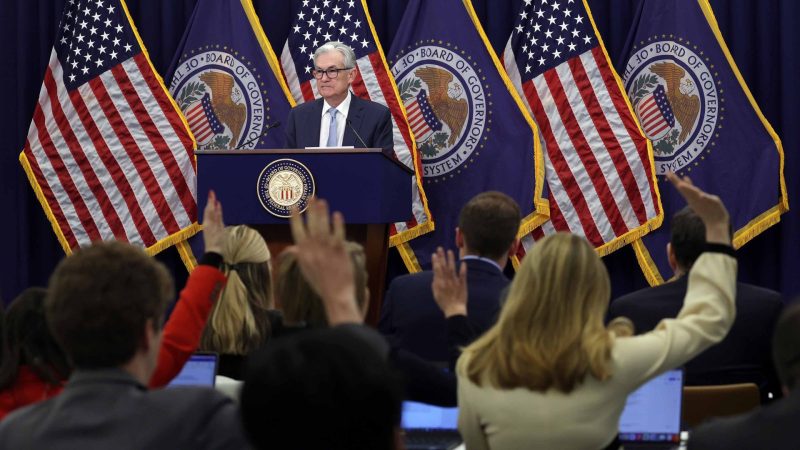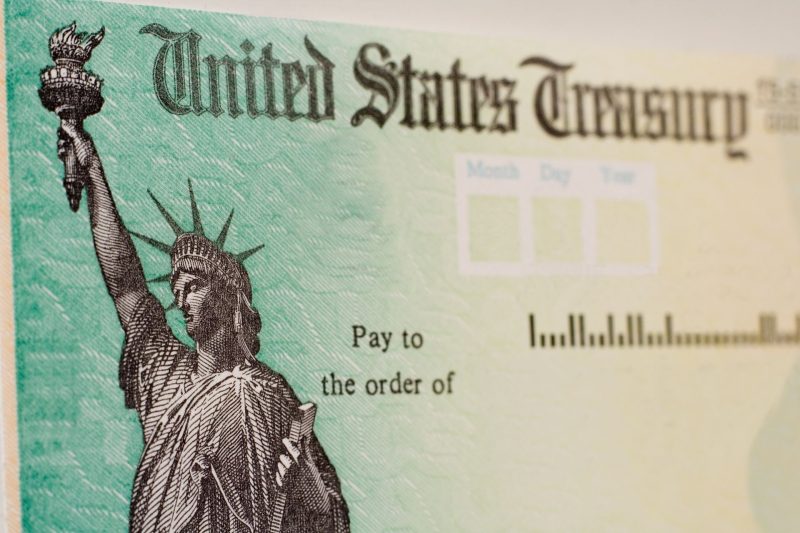Fed Goes Big With First Rate Cut: What the Experts Are Saying

The Federal Reserve at long last brought borrowing costs down from a 23-year high on Wednesday, slashing interest rates by a surprising half-percentage point. With the easing cycle now underway, experts say the size and pace of future policy moves will determine whether the central bank can pull off a rare soft landing of the economy.
The Federal Open Market Committee (FOMC) wrapped up its regularly scheduled two-day policy meeting by cutting the short-term federal funds rate by 50 basis points (bps), or 0.5%, to a target range of 4.75% to 5%. Markets were essentially split on whether the Fed’s rate-setting committee would ease by 25 bps or 50 bps heading into the decision.
New language in the central bank’s policy statement stressed that it has become more concerned about the health of the labor market as inflation continues to recede.
“Job gains have slowed, and the unemployment rate has moved up but remains low,” said the FOMC in a statement. “The Committee is strongly committed to supporting maximum employment and returning inflation to its 2% objective.”
The Fed has a dual mandate. In addition to stable prices, the central bank is supposed to support maximum employment. With the lagged effects of restrictive monetary policy beginning to show up in the jobs market, Wednesday’s rate cut was a foregone conclusion. The only question was the size of the reduction and what the Fed’s Summary of Economic Projections (SEP), or dot plot, would imply for policy going forward.
“The Fed went big and cut 50 bps to get ahead of downward trending labor market data, while also projecting 100 bps of cuts for 2024,” writes Sonu Varghese, global macro strategist at Carson Group. “They also projected the unemployment rate to max out at 4.4% in 2024 and 2025, which justifies the dovish posture.”
Varghese notes that such a large cut to kick off the easing cycle is significant because historically the Fed is late to such actions. “The message here is that the Fed’s got the labor market’s back,” the strategist adds.
With the FOMC’s latest rate decision now on the books, we turned to strategists, investment managers and other experts for their thoughts on what the move means for markets, macroeconomics and monetary policy going forward. Please see a selection of their commentary, sometimes edited for brevity or clarity, below.
Interest rates: the experts weigh in
“The ‘hopefuls’ got everything they wanted in a 50 bps cut. The takeaway here for the amateur economists is that the Fed’s dual mandate is alive and well and that their current focus remains on the employment side of the equation. A 50 bps rate cut when the economy isn’t already headed for a recession is new territory for the Transparent Fed Era, where Alan Greenspan retains the title for only soft landing in 1995. For the markets, this cut allows the U.S. dollar to continue a downward trend and perhaps the opportunity for global stocks to finally participate in a rally.” – Dann Ryan, managing partner at Sincerus Advisory
“Powell doesn’t want to get behind the curve again, especially with the Europeans cutting. The current rate is way above CPI, so there’s no need to delay. Jobs have been trending lower along with energy prices, which probably made this decision easier. Even if a slowdown isn’t clearly happening, the Fed thinks it’s a bigger risk than inflation returning. We’ve gone full cycle. The pandemic is officially in the rearview mirror.” – David Russell, global head of market strategy at TradeStation
“Aggressive rate cuts generally indicate the Fed’s increasing worry over economic activity as deflation seems not to be in play. This aggressive stance is often taken negatively by investors as it may be a sign of a rapid deterioration in current conditions and potentially igniting inflation in the future. In this case, a more sanguine softer-landing view to the aggressive cut may be appropriate as it may reflect a desire by the Fed to undo overly restrictive monetary policy with inflation seemingly controlled. Typically, equity investors should prepare for heightened volatility as concerns over earnings and private-sector spending intensify. In similar cycles, defensive sectors like utilities and healthcare tended to outperform, while cyclical industries may face challenges as companies grapple with a slowing economy and tighter margins.” – George Maris, chief investment officer and global head of equities at Principal Asset Management
“The Fed wants to initiate a rate-cut cycle without starting to inflate an asset bubble, but 50 bps might have been too aggressive. There are not many indications that the economy is slowing in the most recent numbers. A larger cut probably was not needed out of the gate, but that should support risk-on asset allocation. This may be one of the most anticipated and telegraphed start to a rate cut cycle in years.” – Scott Helfstein, head of investment strategy at Global X
“The Fed delivered a larger than normal 50 basis point cut today indicating there was ‘greater confidence’ in inflation continuing its decline towards their 2% target. The decline in inflation has been significant meaning monetary policy rates have become more restrictive than when they were set at this level over a year ago. Yet, with job growth still positive, economic growth positive, credit spreads tight and stock prices very near record levels, it warrants asking why they felt the need to do more than a normal 25 basis point cut. Over the next few months, the fact they went 50 instead of 25 might be less of an issue than the fact that this cut starts a process towards getting rates back to a more neutral rate. We still expect another rate cut or two this year.” – Steve Wyett, chief investment strategist at BOK Financial
“The Fed took the more aggressive path with their first rate cut in four years today. Coming into today, expectations for the magnitude of the cut, 25 or 50 basis points, was the most uncertain Fed decision for investors in recent history. The decision to cut by 50 basis points likely came down to slightly weaker employment and tamer inflation in recent weeks, giving the Fed confidence to make this sharper initial cut.” – Ben Vaske, senior investment strategist at Orion Portfolio Solutions
“The Fed has shown today that they are very concerned with trying to protect maximum employment and have effectively put inflation fears on the backburner. What may be even more important than the magnitude of the first rate cut of this cycle is the revision to the Fed’s dot plot, pointing to a Fed ready to be aggressive with 50 more basis points of rate cuts by year-end.” – Rajeev Sharma, managing director of fixed income at Key Wealth
“The accompanying statement was decidedly dovish, with language around the balance of risks between employment and inflation consistent with recent rhetoric suggesting that the focus has shifted towards potential downside risks to the economy. Indeed, today’s outsized 50 basis point move underscores a greater emphasis on the downside risks to the economy now that inflation is on a downward trajectory. The updated economic and inflation forecasts suggest that a soft landing is still very much in play, with median estimates calling for 2% growth between 2024 and 2027 and inflation essentially moving back to target next year.” – Candice Bangsund, portfolio manager, global asset allocation and private markets solutions at Fiera Capital
“The Fed’s decision to cut rates by 0.5% will lead to an increase in deal volumes through the remainder of the year, and into 2025, as financing conditions improve and borrowing costs lower. This move has certainly been factored into dealmakers’ strategies, as evidenced by the increase of activity on Datasite, which facilitates nearly 15,000 deals annually. The Fed’s rate cut today could not only boost volumes into 2025, but also improve dealmaker confidence and revive successful deal closures.” – Mark Williams, chief revenue officer, Americas at Datasite
“The Fed is shifting into a ‘back to the business cycle’ mode. With inflation easing, the labor market is expected to dictate the pace of future Fed adjustments. Over the coming year, we expect approximately 250 basis points in adjustments. Dialing back restrictive monetary policy could extend the U.S. economic cycle – benefiting both bonds and risk assets – but investors should pay attention to tail risks. Yet positive catalysts in a stable economic backdrop and now falling interest rates continue to line up around the ‘soft-landing’ narrative.” – Ashish Shah, global co-head and chief investment officer of public investing within Goldman Sachs Asset Management
“We remain of the view that recession is not a base case scenario over the quarters ahead. We see no need for the Fed to ‘move ahead of the curve’ by introducing a series of larger cuts at this stage. Of course, we will watch incoming data carefully and if labor market conditions or general health of the consumer weakens materially, we stand ready to adjust our views accordingly.” – Andrzej Skiba, head of U.S. fixed income at RBC Global Asset Management
“Given how much discussion has surrounded this move the announcement certainly wasn’t a surprise, however the lack of guidance by Fed officials indicates that although there was only one dissent there must have been a forceful discussion and work towards building a consensus.” – Quincy Krosby, chief global strategist for LPL Financial
“With the market’s recent tendency to over extrapolate trends, the rate cut was greater than expected. Based on financial instruments, the market is still pricing quite a few rate cuts well into 2025. Risk assets will celebrate this initial cut, but the risk to manage now is how they will react if future cuts, already priced in, do not materialize.” – Howard Chan, founder and CEO of Kurv Investment Management



